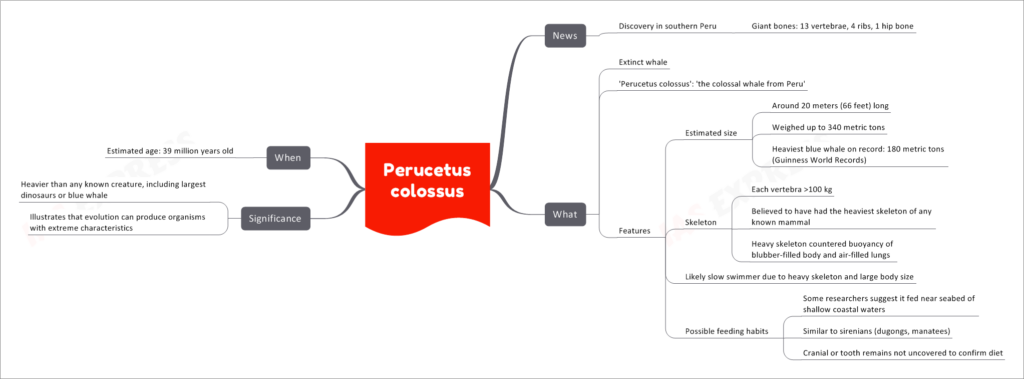Perucetus colossus

A remarkable discovery in southern Peru has unveiled the fossil remains of an extinct whale named Perucetus colossus, aptly known as “the colossal whale from Peru.” This ancient creature’s features, size, and significance shed light on the extremes of evolution and the fascinating world of prehistoric marine life.
The Discovery
In the southern region of Peru, paleontologists made a groundbreaking discovery of the remains of Perucetus colossus. The findings include 13 vertebrae, 4 ribs, and 1 hip bone, providing valuable insights into the ancient creature’s anatomy.
What is Perucetus colossus?
Perucetus colossus is an extinct whale species that lived around 39 million years ago. Its name, “the colossal whale from Peru,” reflects its massive size and its location of discovery.
Features of Perucetus colossus
Impressive Size and Weight
Perucetus colossus is estimated to have been around 20 meters (66 feet) long, making it one of the largest known creatures in history. It is believed to have weighed up to 340 metric tons, surpassing the heaviest blue whale on record (180 metric tons, Guinness World Records).
Heaviest Known Skeleton
The skeletal remains of Perucetus colossus offer another astonishing characteristic. Each vertebra of this ancient whale weighed over 100 kilograms, contributing to its title as the mammal with the heaviest known skeleton. This heavy skeleton likely counteracted the buoyancy of its blubber-filled body and air-filled lungs.
Slow Swimmer
Given its massive size and heavy skeleton, Perucetus colossus was likely a slow swimmer compared to modern whales. The weight of its skeleton may have hindered its agility in the water.
Possible Feeding Habits
While researchers have not uncovered cranial or tooth remains to confirm its diet, some speculate that Perucetus colossus may have fed near the seabed of shallow coastal waters, similar to sirenians such as dugongs and manatees.
Significance of Perucetus colossus
Perucetus colossus holds significant importance in the field of paleontology. Not only was it heavier than any known creature, including the largest dinosaurs and modern blue whales, but its existence also illustrates the remarkable capabilities of evolution in producing organisms with extreme characteristics.
Estimated Age
Perucetus colossus roamed the seas approximately 39 million years ago, offering valuable glimpses into the marine life of prehistoric times.
If you like this post, please share your feedback in the comments section below so that we will upload more posts like this.

